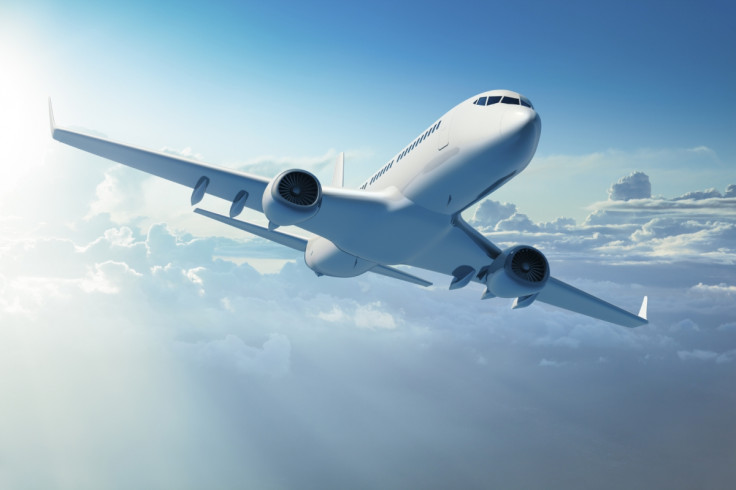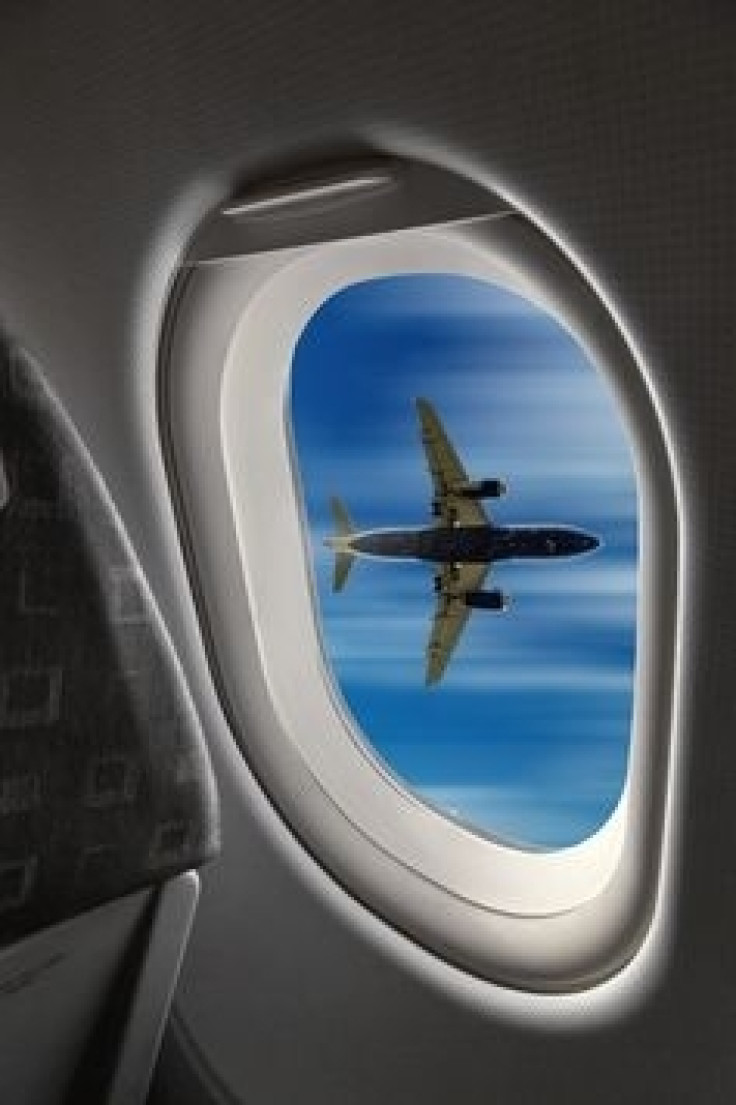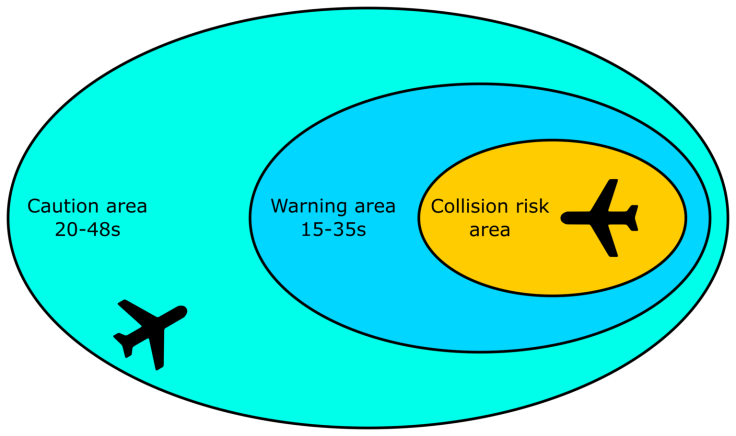How technology prevents planes from crashing into each other mid-air
Inside the tech that makes 'near-miss' air collisions almost impossible.

Davide Crivelli, Cardiff University
The sky is a crowded place. In June 2017, there were on average 33,000 flights every day over Europe alone.
Surely then, it's not surprising that we hear of "near-misses" between passenger jets, and of "hero pilots" avoiding "mid-air collisions"? Well yes, actually it is, because that can't happen. These so-called "near-misses" are still a long way off from being a collision.
Take the recently reported news of an Emirates Airbus A380 and an Air Seychelles Airbus A330 travelling from Mauritius to the Seychelles, for example. The two planes came closer than the safety margin required by regulations: all aircraft must have a 14km radius, 300m in height "bubble" around them, in which no others are allowed to fly.
Planes tend to follow similar paths, called airways, which are like roads. Flights are directed at different altitudes, on different layers – called flight levels – which ensure that two crossing aeroplanes are never at the same altitude, and these bubbles are kept clear. Air traffic controllers also have radars and computer systems which help them keep planes far apart when descending, climbing, or changing route. In this instance, the Emirates crew misunderstood the air traffic controller's instructions, and started descending through the Air Seychelles flight path, while the controller did not correct them.
Pilots, air traffic controllers, maintenance staff and everyone else involved in air transport do sometimes make mistakes but it is very rare. Safety has been increasing steadily, from 12 fatalities per 10 million flights in 2006, down to four in 2016. Everyone working in aviation is highly skilled and regularly trained and, on top of that, the technology used to fly aircraft is very sophisticated and can quickly overcome human error.

In this instance, the traffic collision avoidance system fitted in both aircraft quickly spotted the mistake and instructed both crews to adjust their flight path. Rather than it being a narrow escape, the closest the two planes ever got was 14km apart – and more than 30 seconds from any remote risk of collision. Hardly a "near miss".
Avoiding collisions
Since the early 1990s in the USA – and since 2000 in Europe – passenger aircraft cannot fly without a traffic collision avoidance system (TCAS). This is a relatively simple but clever radio system that helps keep the sky safe. The aircraft constantly transmits its identifier via radio, along with some other information such as altitude, speed and direction.
If an aircraft's TCAS picks up a signal from another plane, it starts a conversation with the other aircraft, working out how far away they are from one another based on the time it takes to receive a response. The system also works out which direction the transmission is coming from using an antenna and then calculates if there is going to be an unsafe situation. It also builds a display of surrounding aircraft to let the pilot monitor the situation.
If an aircraft is about to burst the safety bubble around another aircraft, the two TCAS units start coordinating a solution. At first, usually between 20 and 48 seconds from the risk of collision, pilots of both aircraft will hear a concerned voice alerting "traffic! traffic!" in the cockpit. The intruder aircraft will be displayed in yellow on the display and pilots will usually start looking outside for lights or visual clues.
As the two aircraft get closer – within 20 to 25 seconds of one another – the TCAS issues a "resolution advisory". It automatically coordinates a smooth evasive manoeuvre with the other aircraft's unit and the systems tell the pilots what to do: descend, climb, or make other altitude changes.
Pilots are trained to follow this instruction even if it contradicts the air traffic controller, mainly because the system is much faster at reacting and making decisions. One of the immediate causes of the infamous Überlingen mid-air collision over southern Germany in 2002 – in which 71 people were killed – was due to one of the two crews not following TCAS instructions, instead following an air traffic controller's directions.

Pilots are never told to make turns by the system, only to climb or descend. But if they see that an aircraft is on a collision course, they must turn to their right, as a rule. The direction of the other aircraft is easy to tell: the left wing has a red light on the tip, and the right wing has a green light. Planes crossing right to left have right of way and show a red light to the other aircraft. Those going left to right show a green light. It's a basic intuitive system, so that pilots can react properly in the worst-case scenario.
It is most likely that as the pilot of the Air Seychelles flight received a TCAS advisory, he decided to turn right as a precaution after seeing the other aircraft's lights. As stated, the minimum distance between the two aeroplanes was around 14km after the turn, which means that the 30-second margin of safety was kept, even taking into account that they were flying at around 850km/h.
This was definitely not a "near-miss", as it has been reported. But the aviation industry is continually seeking to improve its safety standards, so even though all turned out fine, this event will still be thoroughly investigated.
Davide Crivelli, Lecturer in Mechanical Engineering, Cardiff University
This article was originally published on The Conversation. Read the original article.
© Copyright IBTimes 2024. All rights reserved.





